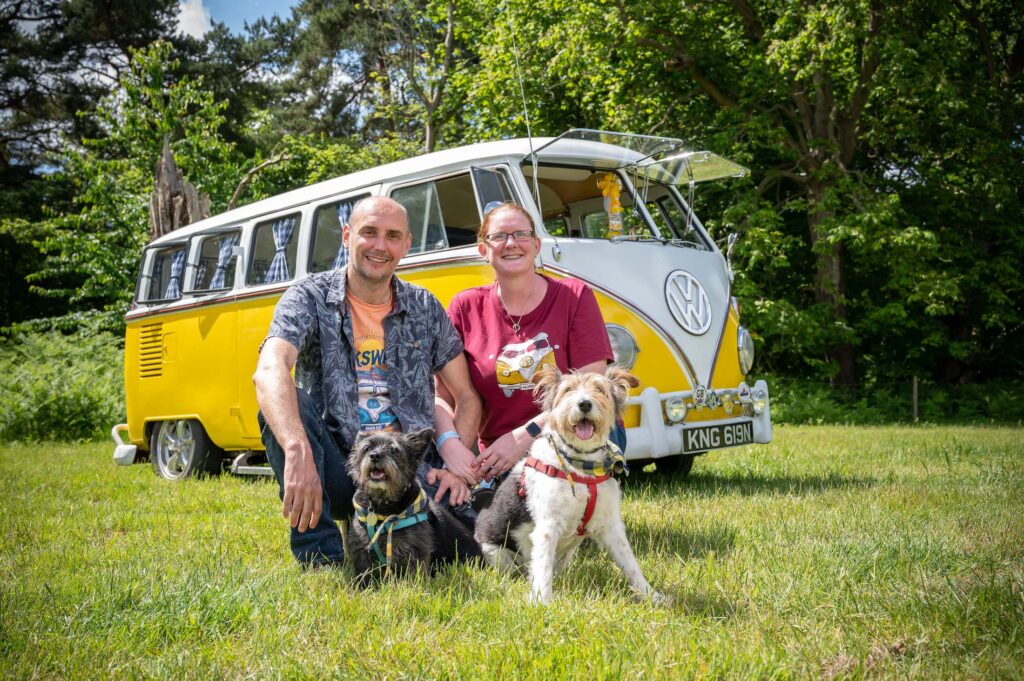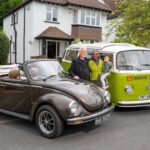It would be a stretch to say that Stuart and Aly bought their Brazilian split screen just for their two dogs, Woody and Riley – finally being able to afford one also played its part.
But the couple’s canine companions are getting on in years, and leaving them in the care of dog-sitters for holidays abroad no longer appealed.
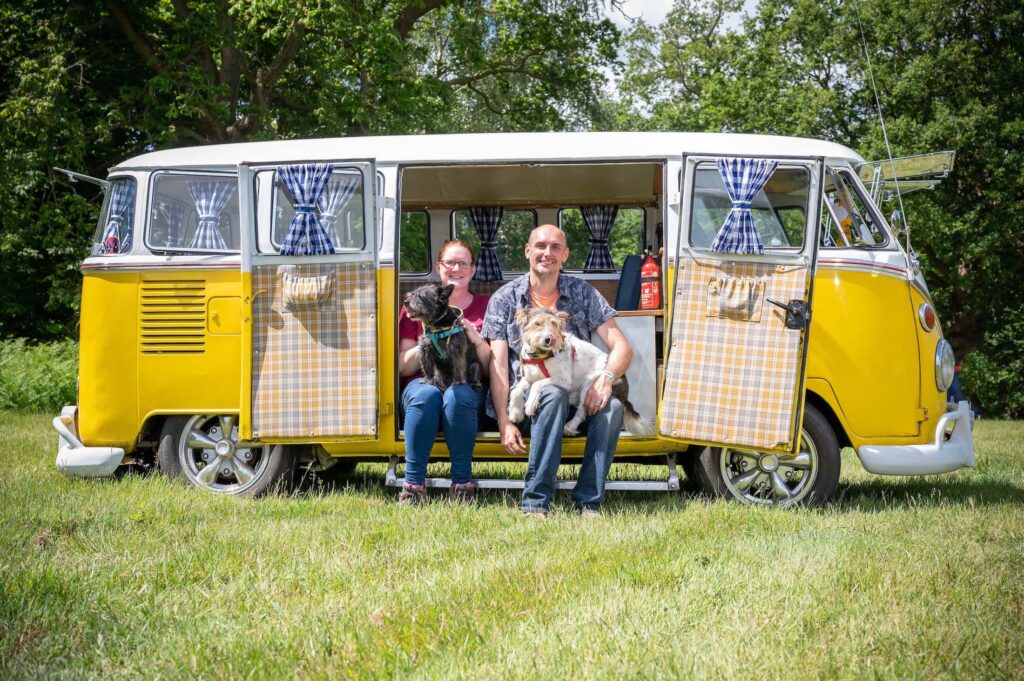
“Our theory was the dogs aren’t getting any younger,” says Aly, “so we need to take them away with us all the time. Now we take them here, there, and everywhere with us.
“It’s Woody’s happy place – he’s obsessed with it. If he sees it, or hears it, he’s out there trying to get in it.”
Woody, a rescue Fox Terrier and Border Collie cross, “is just grateful to be anywhere in it,” adds Stu.
Woody the dog’s van life
“It’s because he ends up going everywhere he likes, like the beach and other great places. When we were reupholstering it, he didn’t like the noise the staple gun was making and he took himself off, pushed one of the doors open and went and sat inside the bus.”
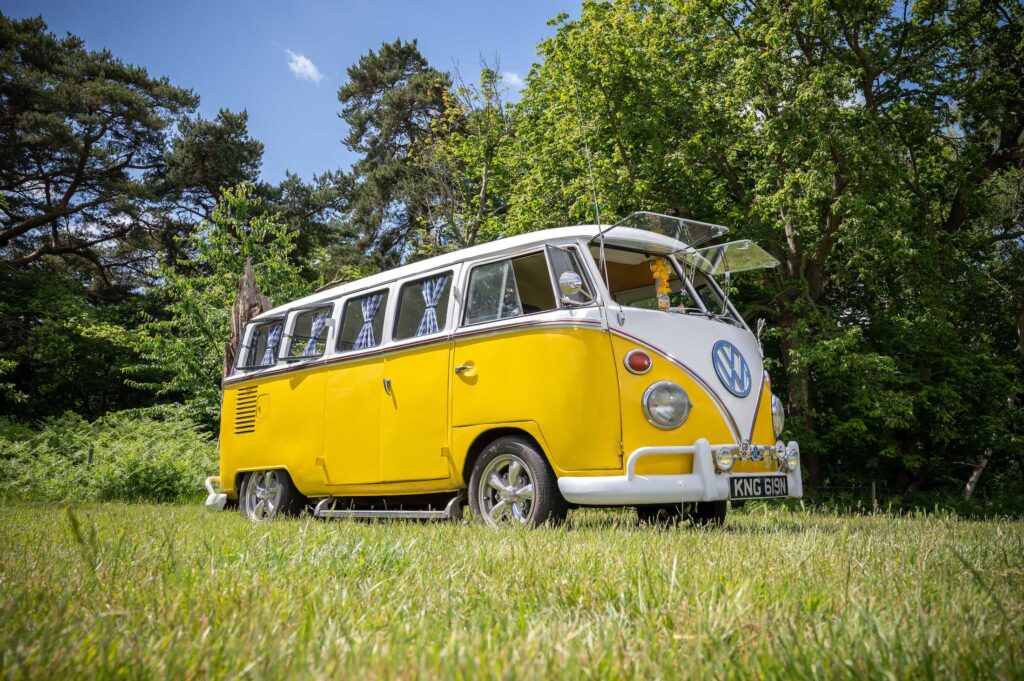
Meanwhile, Riley – Norfolk Terrier, Westie and Toy Poodle – will, if he’s allowed, “hang out of the window and have everyone wave at him as he’s driving along. He gets strapped in with his paws hanging outside the window.”
What’s good for the dogs has been equally liberating for Stuart and Aly, who bought the Splittie out of a field as the UK was heading into another Covid-19 lockdown in October 2020.
“It was very much a lockdown project,” says Stuart. “We had it towed to us after about six months of intense negotiations over the price, when he finally agreed to give it up. It’s been a bit of a project from then onwards.
Getting the Brazilian split screen opened up a whole new world
“It’s opened up a whole new world to us. The festivals and the scene wasn’t really what we’d thought about when we bought it, but you kind of fall into it and that’s where the community is. That’s where they get together and it’s a lovely thing to do.
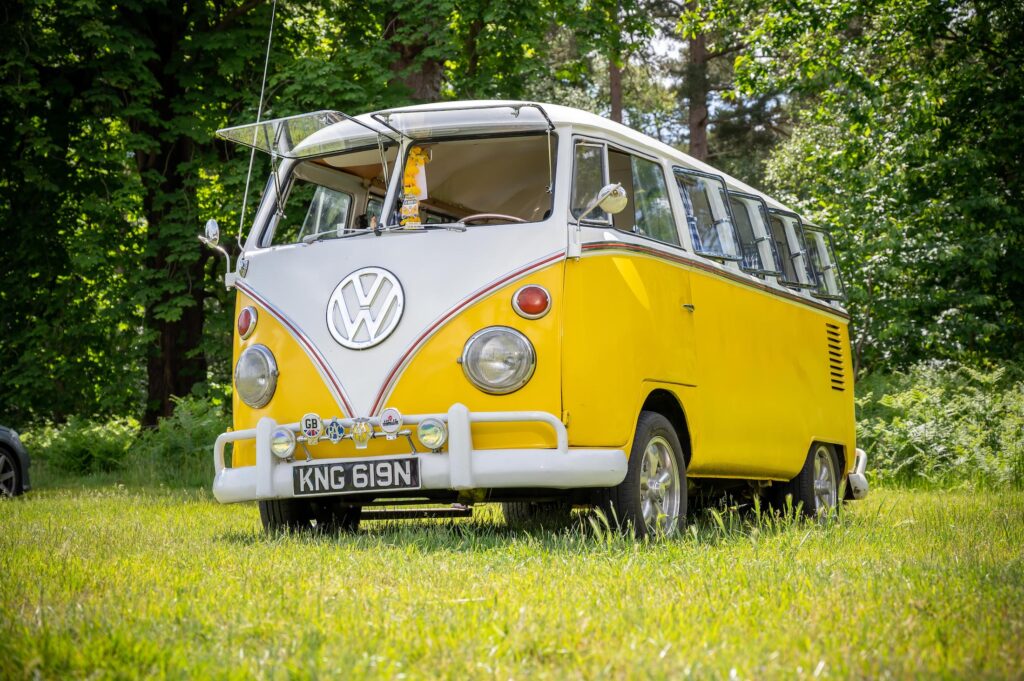
“It will be out and about all summer. Hopefully we’ll have thousands more miles on it by winter. We’ve only got two spare weekends through the whole of summer, which is ridiculous. If there’s something we can take it to, we’ve got it booked in.”
Stuart had been attracted to air-cooled Volkswagens from his teenage years, but they were always out of his price range.
“The days of them being £500 by the side of the road were already long gone when I was a teenager,” he says. “It wasn’t until I hit my 40s that I was able to find one that I thought was within my capabilities to rescue.
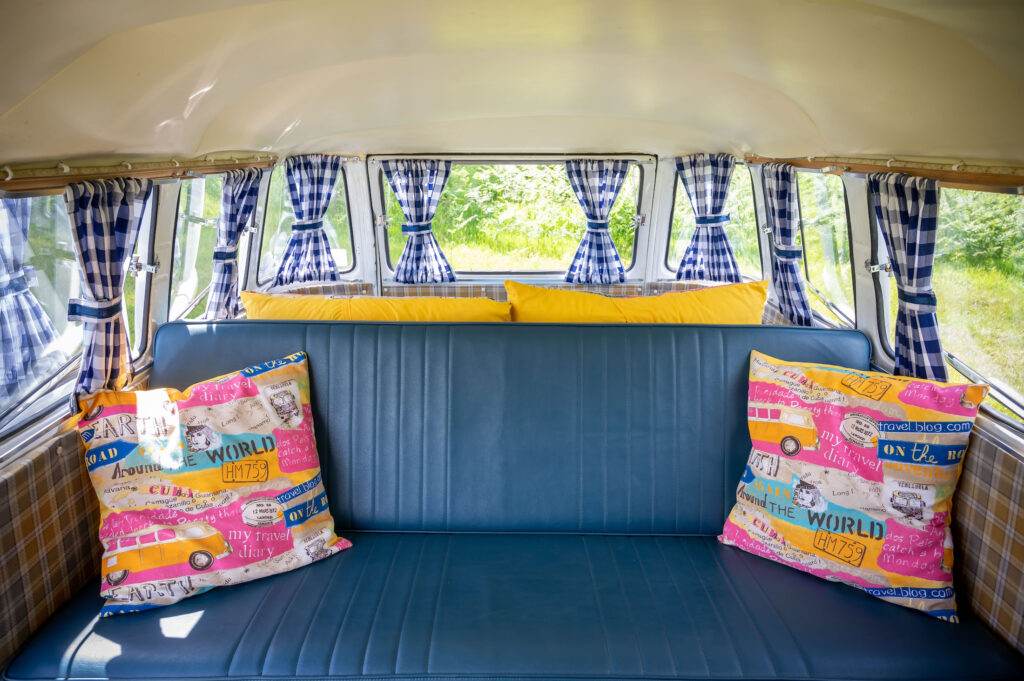
One of the last split screen camper made
“Even now, I never thought split screens would be within my grasp, so we just got incredibly lucky with this one. It’s a 1975, which will make a lot of people scratch their heads because most people think they stopped making them in ‘67 but they carried on making them in Brazil until 1975, so it’s pretty much the last split screen they made.
“It’s a bit of a hodgepodge of different parts and pieces. You often find that things aren’t standard on them, but it all adds to the challenge.”
And it was quite a challenge.
The previous owner had imported the Splittie from Brazil before giving up on restoring it, and it had languished in a field for several years.
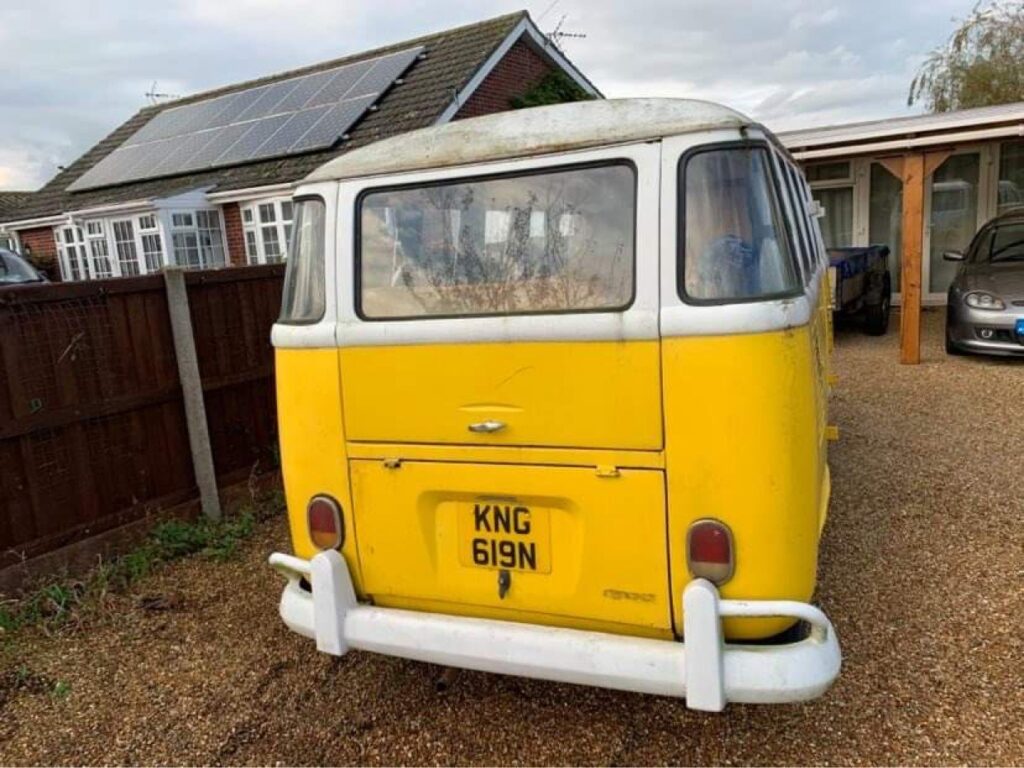
“We’d looked at a few Bays and I saw another Splittie that was a bargain but needed so much work it was beyond my capabilities, and this one was tucked behind a tree in the same guy’s garden, surrounded by 20ft high nettles,” says Stuart. “It was covered in green, basically.
“We thought it was too good of a bus to leave sitting rotting in a field – it needed rescuing. After we’d seen it, we discussed it for several hours, but we’ve got an outlook that if we want to do something, we never want to have regrets and say ‘I wish we had’. It’s been a massive challenge, a massive learning curve, but I think it’s been well worth it.”
Six weeks spent getting the Brazilian split screen camper running
Stuart, who converted his personal ‘man cave’ back into a garage, spent about six weeks getting the Brazilian, the only split screen with a 1600cc engine, up and running.
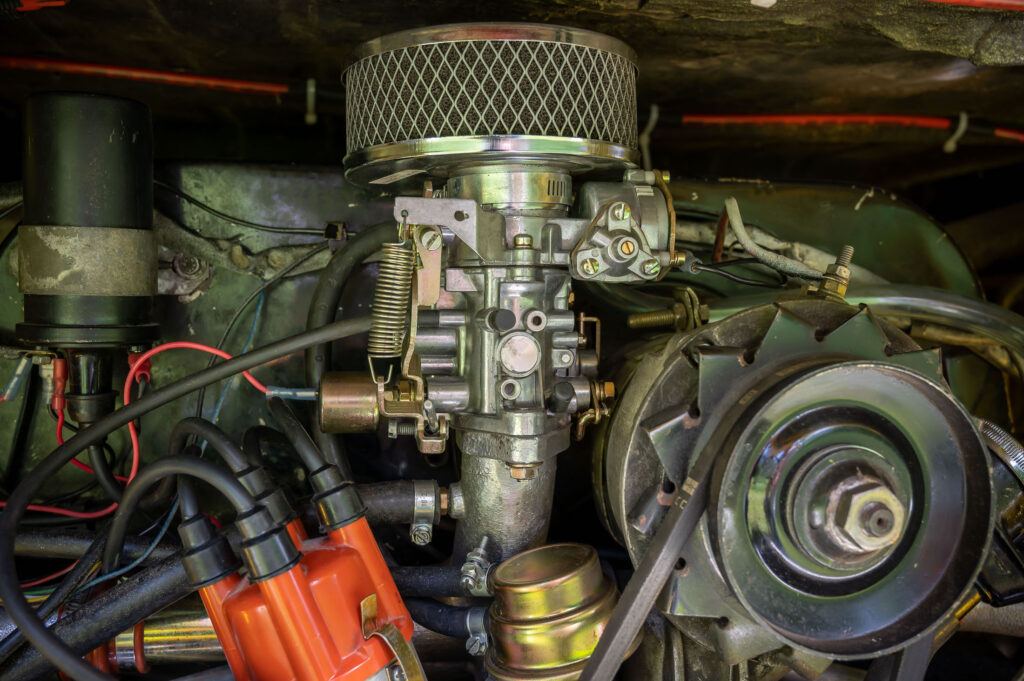
“We had a few little trips out over the winter, and then from about March to September we put about 4,500 miles on it,” he says. “We took it all over, including to the Isle of Wight Festival, which was a challenge in itself to get it long distance ready.
“Because it was a completely unknown entity as a non runner we’ve found all the headaches and issues with bits of engine, carbs that needed rebuilding, fuel pumps that had failed diaphragms, and just found out as we went along.
“It became clear fairly quickly that the previous owner had cooked the engine, which is why it was a non runner, so from there we’ve just been trying to get it to the best of its abilities.”
Journey of discovery
Stuart’s journey of discovery was greatly aided by John Muir’s How to Keep Your Volkswagen Alive, “a bible that gives you all the basics”.
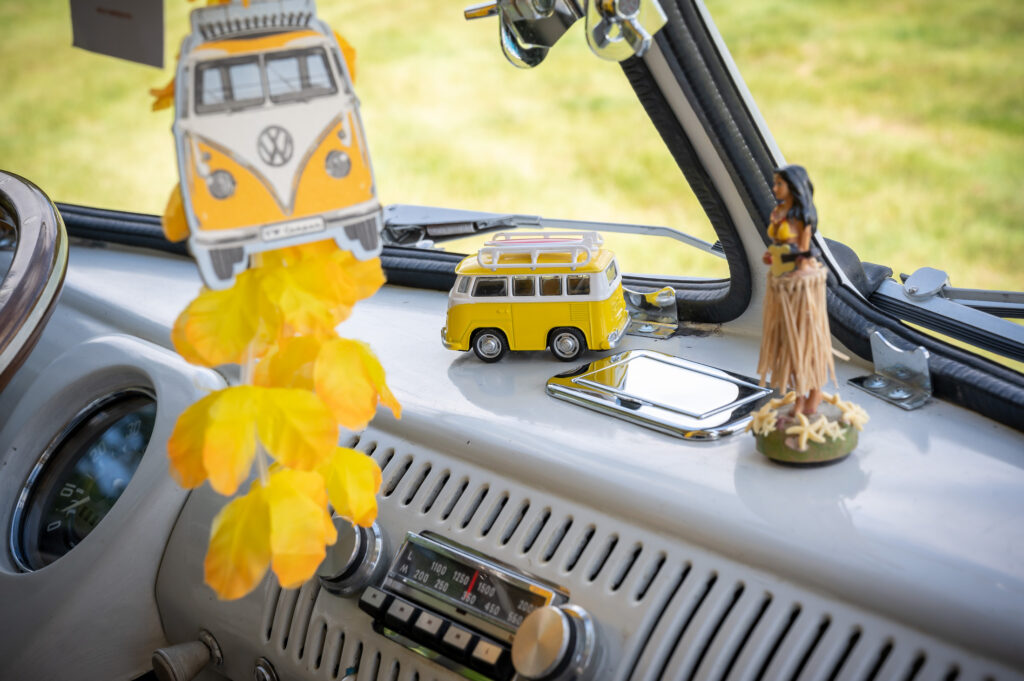
“I read that from cover to cover and then used a lot of YouTube and Dr Google, plus a lot of advice from the very helpful VW community to diagnose and pinpoint issues,” he adds, also getting plenty of help from Wayne at the garage next door.
“When he had free space on the ramp, I was able to use it and go through the bus. We’ve tried to sort it mechanically, so it’s reliable, and then the bodywork and paint came later.”
And that’s when the real fun started, as Stuart taught himself to weld, to spray paint, and how to dismantle cars.
“There were acres of rust,” he remembers. “I’d just unpeel more and more, and the bottom 12 inches all the way round the bus had been bodged and patched over 45 years. It was full of filler a centimetre and a half thick in places.
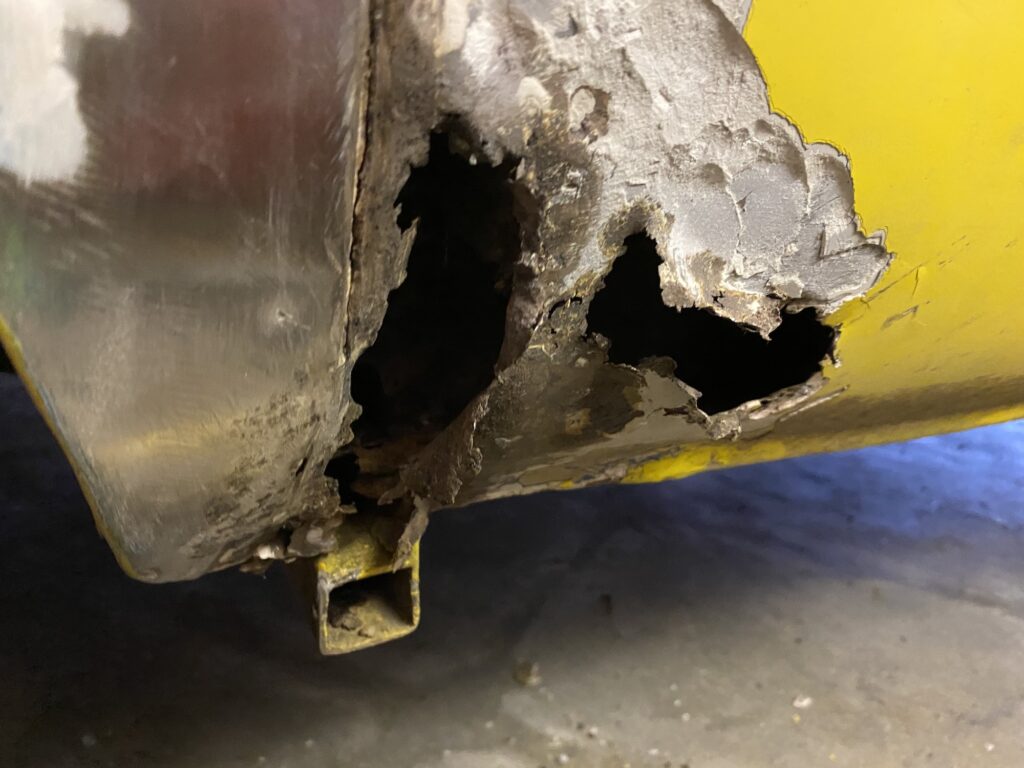
“I spent weeks working my way round the bus, and the whole bottom section of the bus has been cut away.
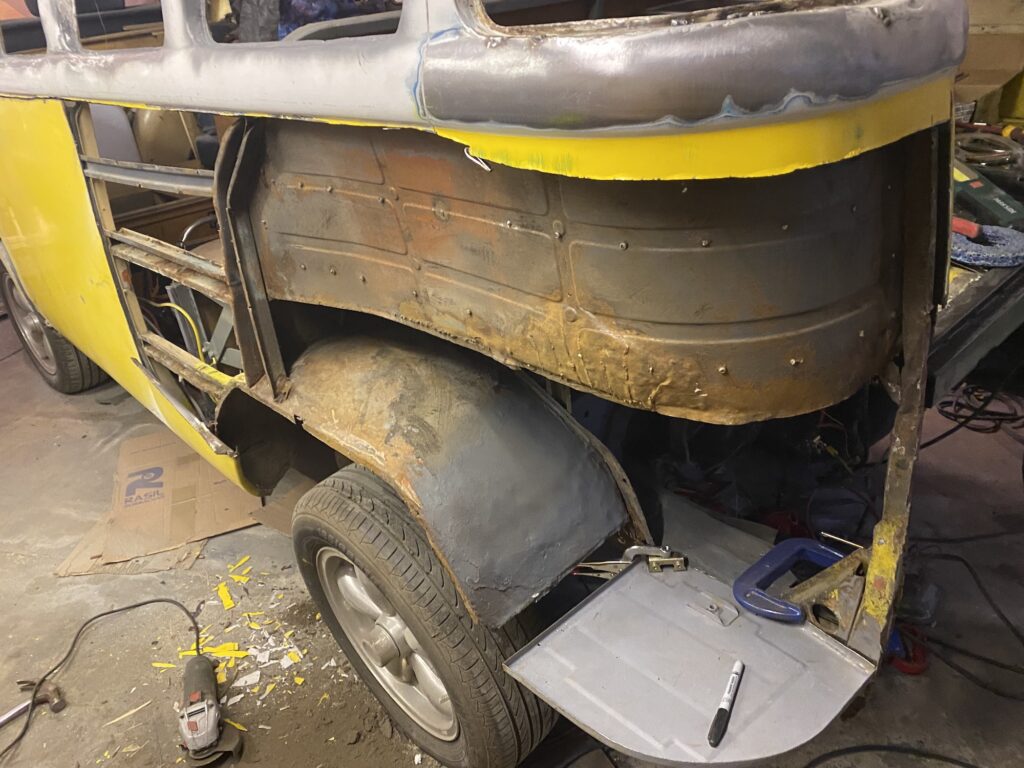
“I’d done some basic stick welding donkeys years ago and was never very good at it, but I invested in a decent MIG welder, a big bottle of gas, and did a few hours practising.
“It’s by no means perfect, but it’s more than adequate, and it’s solid.”
Stuart reckons it took about six months, working an average of four or five hours a day, to get the camper in the condition you see in these pictures – only finishing a few days before its first outing of the summer.
Working every evening and weekend
“I was out in the garage pretty much every evening and every weekend,” he says. “But that’s what you’ve got to do if you’re going to own one of these buses and not go broke or remortgage your house. You’ve got to do it yourself.
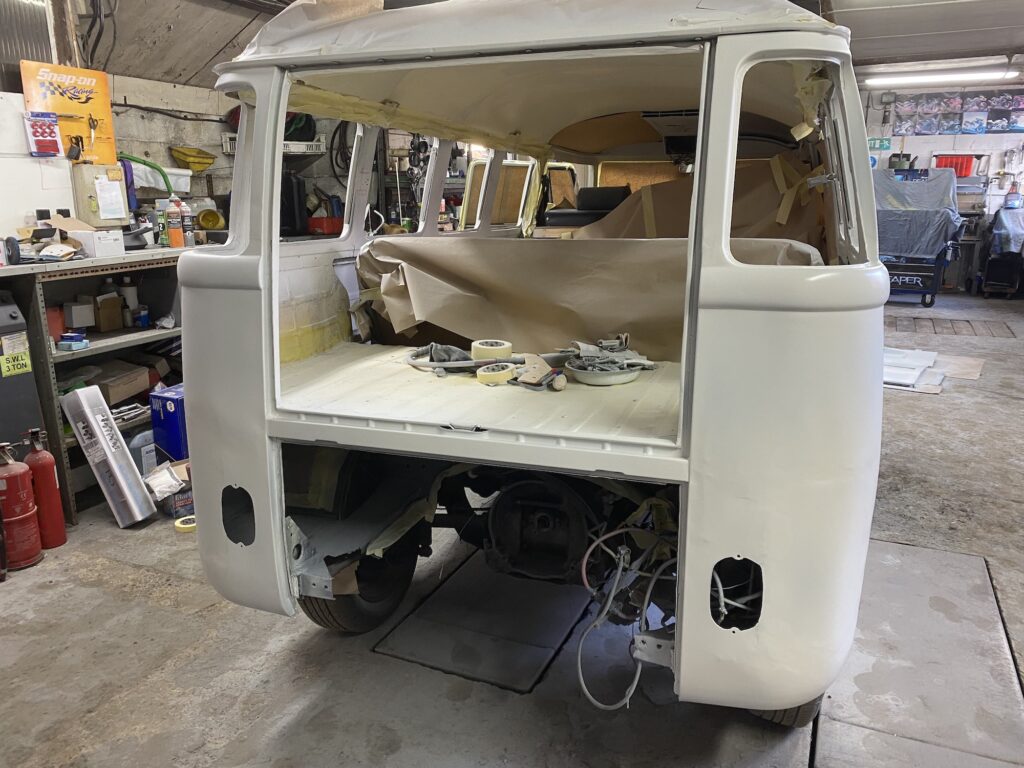
“On the Brazilian forums, there are a few guys who have taken theirs into specialists and by the time they’ve had the bodywork and engine work done they’re £18,000 to £25,000 in and they can’t afford to keep the bus because they’ve got to pay the restoration bill on it.”
Stuart and Aly paid £10,500 for the camper as a non-runner, with another £3,000 to £3,500 spent on the restoration, including all the materials, welding and spraying kit.
“There were strange things like the corners, which are such rare things – it was £1,000 for a piece of metal,” says Stuart. “So after some investigating, I bought a Bay one, cut the Bay lights out, welded in new metal and made some original corners. I had to teach myself how to do it creatively at a sensible price.”
Originally a light pastel blue, the bus was repainted its current sunshine yellow in Brazil, a colour Stuart has matched with a RAL yellow, with a bright white top to provide a striking contrast.
Inside, the existing home-made interior was gutted, a full-size rock-and-roll bed replacing its undersized predecessor (“we didn’t want to have to sleep within two inches!”), and a porta potty fitted under a buddy seat.
“By no means a show bus”
“It’s by no means finished and it’s by no means a show bus,” says Stuart. “It was bought to be used, driven and run.
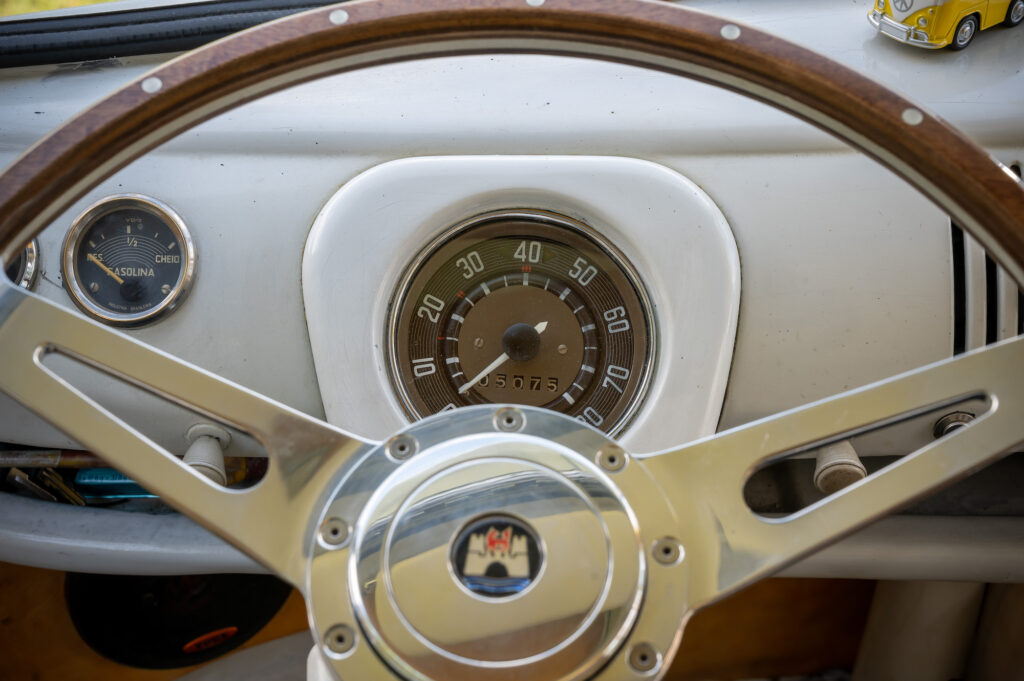
“Because it’s a Brazilian, it’s never going to be worth hundreds of thousands of pounds. It’s got a ceiling price, so we can use it as a normal, everyday thing. We haven’t got to worry if someone scrapes it in a car park, it won’t ruin a £15,000 paint job, because it will just be me with a touch up brush.
“It’s not perfect, but for what we need it works fine. We’re throwing these furry rascals in and out of it all day, and loading it up, so…”
The eagle-eyed among you may have noticed that the rear of the Splittie looks a little lower than it should, parked in the sunshine at Haughley Park in Suffolk. It’s not intentional…
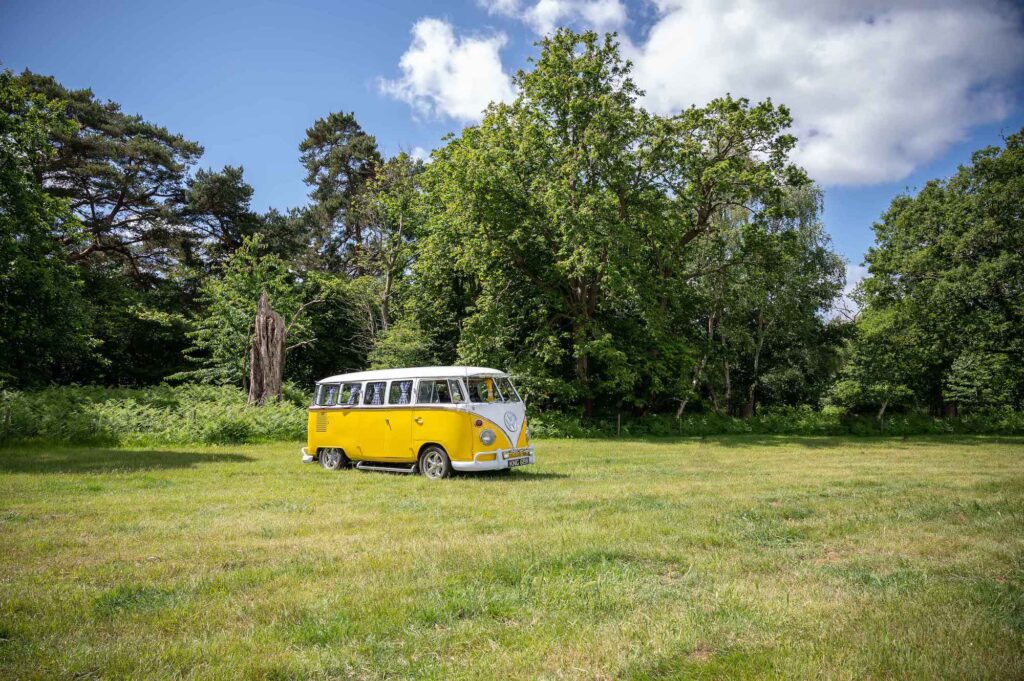
“This is the first real run out this year,” says Stuart. “We’ve given it a bit of a shakedown, as it were, and it’s definitely shaken and things have come down on it.
“We got down here perfectly, pulled into Haughley Park and just as we were pulling off from the ticketing bit the rear torsion bar snapped on one of the springs.
“It’s done 45 years of hard graft on horrible Brazilian roads, and I think one little bump on the grass was probably the straw that broke the camel’s back. It looks fantastic – it looks like it’s been lowered, but it definitely hasn’t.
“I’ve now got a mad rush to get it done ready for the Isle of Wight in about three day’s time. I’ve already ordered the parts, and then it’s probably an all-nighter on Monday night to get our hands dirty and get it set up.”
Stuart emails after the weekend at the Alive & V-Dubbin festival where we meet. The bus was ready for its next adventure with about 24 hours to spare.
Breakdowns go with the territory of owning an old VW bus
He’s well aware that mechanical mishaps go with the territory of owning an old bus, but there is usually someone around to help.
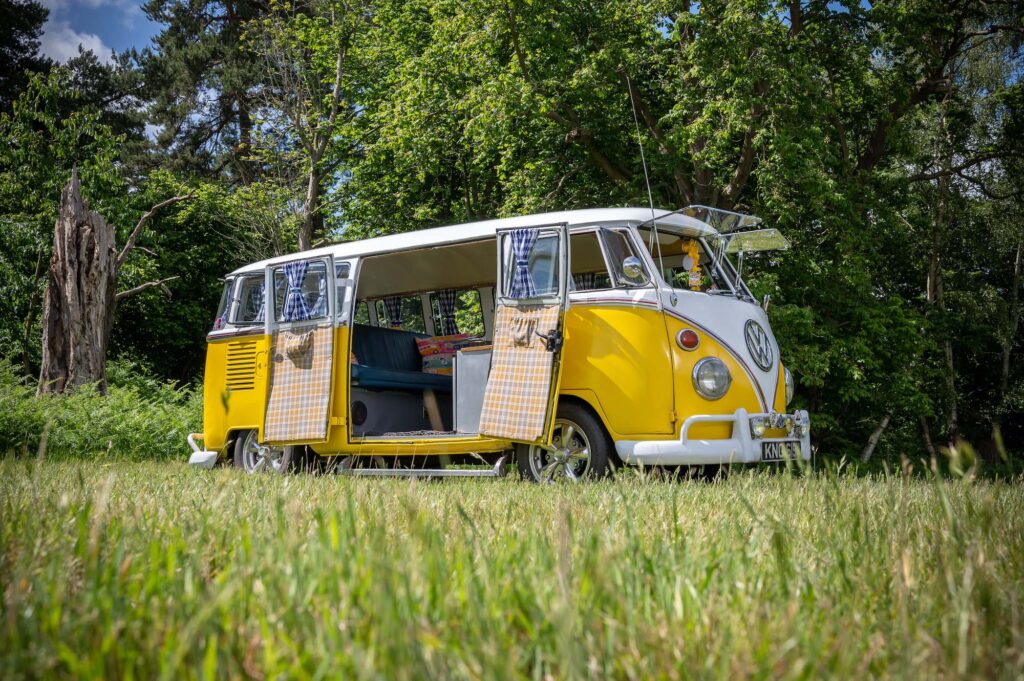
“Everyone knows they are old buses, and they’re going to break down,” he says. “When we did the run over to the Isle of Wight, we were having some temperature issues when we got to Southampton.
“We got it over to the island and I put a message on the local forums there, and someone literally that day dropped a timing gun in to me so I could check everything, and picked it up a few hours later. That’s how friendly and helpful the whole community is.
“If you pull in by the side of the road and you’re checking things out, people will stop if they’ve got a camper or Beetle and go ‘are you ok, do you need some help?’
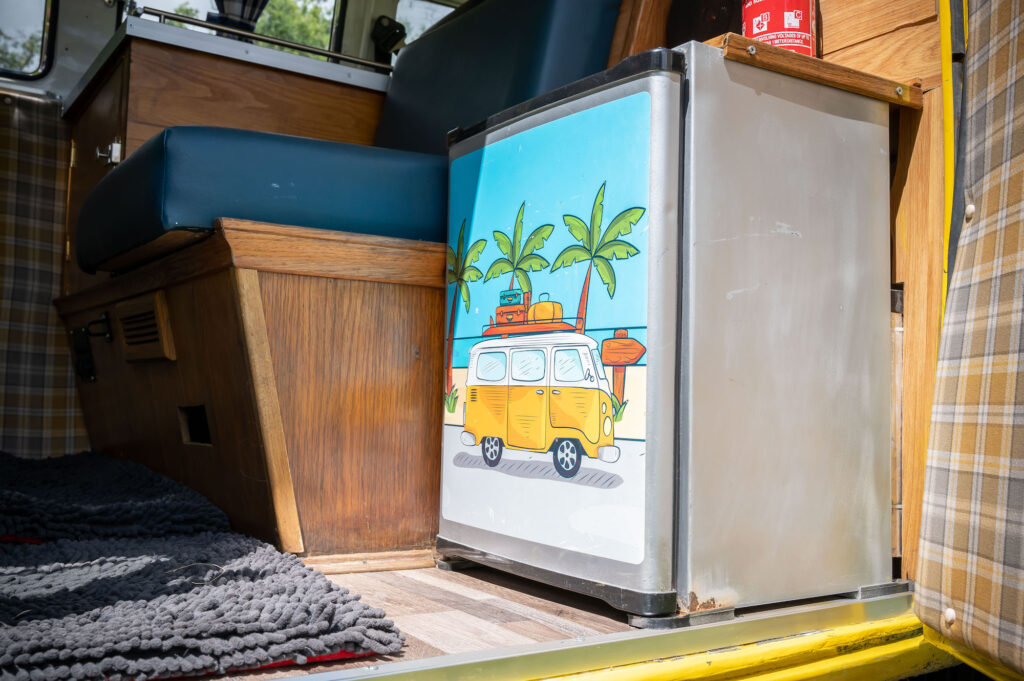
“A lady that lives in our village has just inherited a Bay, and she’s bringing it over to mine. She was thinking she was going to have to take it to a specialist, but I said ‘look, I’ve been through the pain and the hell, I can spend an hour or two looking at it for you and get it functionally running’. So I’m trying to pay it forward, as it were.”
Sheer enjoyment
The trials and tribulations are, however, counterbalanced by the sheer enjoyment of driving a vehicle that’s seemingly loved wherever it goes.
“The smiles that it gives you while you’re driving it along, with everyone waving at you, and all of the community that goes with it, makes it well worth all the hassle,” says Stuart.
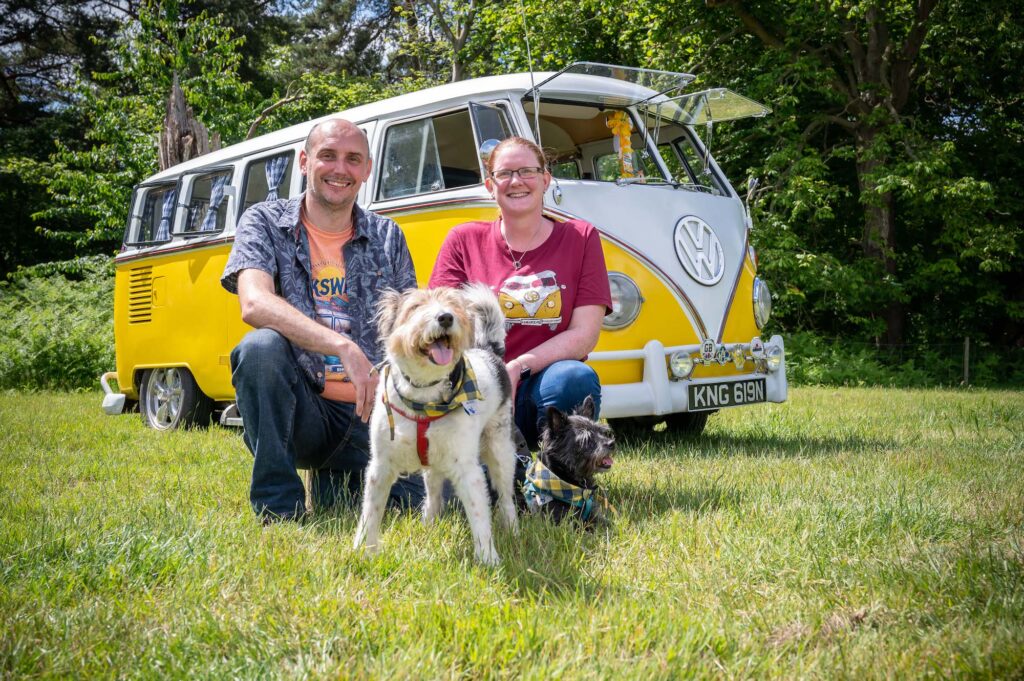
“We’ll keep doing this for as long as we’re physically able, if it doesn’t break me before the end. It will be with us for the rest of our days.”
